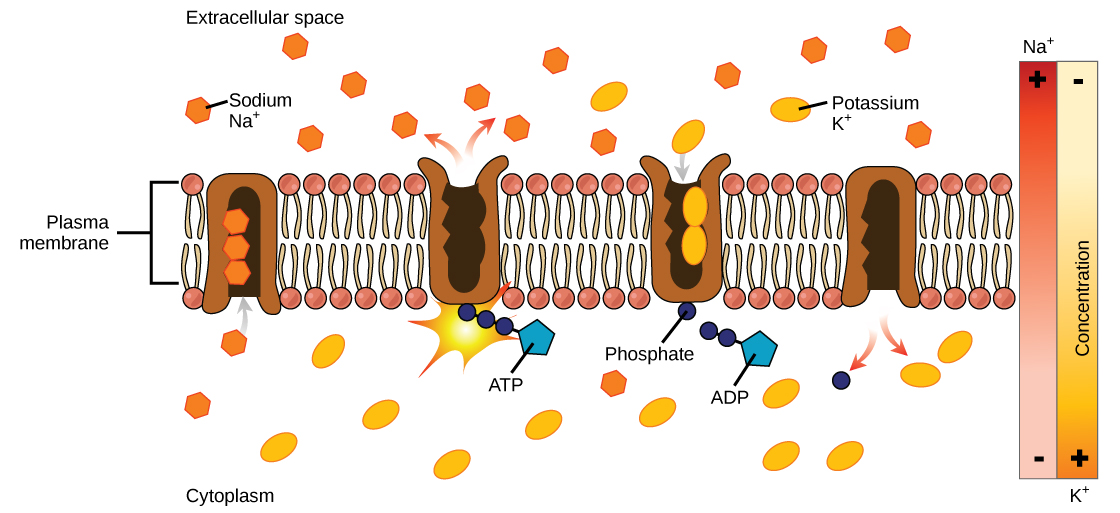| << Chapter < Page | Chapter >> Page > |
Two mechanisms exist for the transport of small-molecular weight material and small molecules. Primary active transport moves ions across a membrane and creates a difference in charge across that membrane, which is directly dependent on ATP. Secondary active transport describes the movement of material that is due to the electrochemical gradient established by primary active transport that does not directly require ATP.
An important membrane adaption for active transport is the presence of specific carrier proteins or pumps to facilitate movement: there are three types of these proteins or transporters ( [link] ). A uniporter carries one specific ion or molecule. A symporter carries two different ions or molecules, both in the same direction. An antiporter also carries two different ions or molecules, but in different directions. All of these transporters can also transport small, uncharged organic molecules like glucose. These three types of carrier proteins are also found in facilitated diffusion, but they do not require ATP to work in that process. Some examples of pumps for active transport are Na + -K + ATPase, which carries sodium and potassium ions, and H + -K + ATPase, which carries hydrogen and potassium ions. Both of these are antiporter carrier proteins. Two other carrier proteins are Ca 2+ ATPase and H + ATPase, which carry only calcium and only hydrogen ions, respectively. Both are pumps.

The primary active transport that functions with the active transport of sodium and potassium allows secondary active transport to occur. The second transport method is still considered active because it depends on the use of energy as does primary transport ( [link] ).

One of the most important pumps in animals cells is the sodium-potassium pump (Na + -K + ATPase), which maintains the electrochemical gradient (and the correct concentrations of Na + and K + ) in living cells. The sodium-potassium pump moves K + into the cell while moving Na + out at the same time, at a ratio of three Na + for every two K + ions moved in. The Na + -K + ATPase exists in two forms, depending on its orientation to the interior or exterior of the cell and its affinity for either sodium or potassium ions. The process consists of the following six steps.

Notification Switch
Would you like to follow the 'Biology 2015' conversation and receive update notifications?